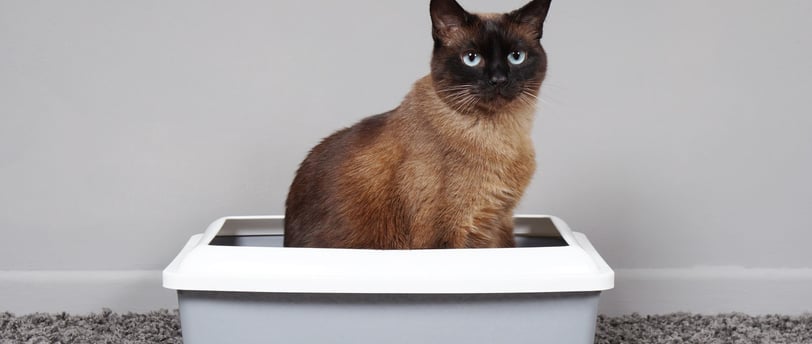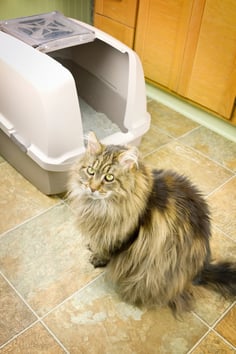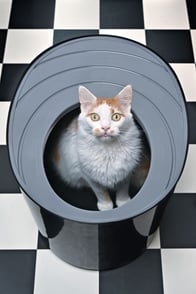The Ultimate Guide to Cat Litter Boxes
Discover everything you need to know about cat litter boxes, from types and choosing the right litter to setting up for your feline friend's comfort. Learn expert tips and alternatives for a cleaner home environment.
LITTER BOXES
Uncle Sam
7/9/20244 min read


Caring for a feline friend involves more than just providing food and shelter. One essential aspect of maintaining your cat's health and happiness is ensuring they have a clean and comfortable place to relieve themselves.
This comprehensive guide will walk you through everything you need to know about cat litter boxes, from the basics to expert tips on choosing the right one, setting it up for success, and finding alternatives.
Define Cat Litter Box
A cat litter box is a designated area where cats can urinate and defecate indoors. It typically contains a special type of absorbent material known as cat litter, which helps manage odors and moisture.
It is also known as a sandbox, cat box, litter tray, cat pan, potty, pot or litter pan.
Cat litter boxes are designed to stimulate feline instincts around waste elimination and provide a cat with loose material that is easy to rake over the waste. A litter pan's bottom is typically filled with 2 inches (5cm) or less of cat filler.
Why Choose a Litter Box For Your Feline Friend(s)?
Cats naturally tend to bury their waste, making a litter box an essential part of domestic cat ownership. Providing a litter box offers several benefits:
Promotes Hygiene: Encourages cats to use a designated area for waste elimination, keeping the rest of the house clean.
Reduces Odors: Properly maintained litter boxes help control unpleasant odors associated with cat waste.
Prevents Accidents: Minimizes the chances of your cat urinating or defecating outside the box.
Types of Litter Boxes
Choosing the right litter box depends on factors such as your cat's preferences, your home's layout, and your personal preferences. Here are some common types:
1. Open Litter Boxes
Description: Basic rectangular or square boxes without lids.
Advantages: Easy access for cats, generally less expensive, good for cats who don't like confined spaces.
Considerations: May not contain odors as well, litter may scatter outside the box.
2. Covered Litter Boxes
Description: Litter boxes with a hood or cover.
Advantages: Provides privacy for cats, helps contain odors, and reduces litter scatter.
Considerations: Some cats may feel confined, and require regular cleaning of the hood.
3. Self-Cleaning Litter Boxes
Description: Automated boxes that sift and remove waste.
Advantages: Minimizes scooping, and keeps litter cleaner for longer.
Considerations: Initial cost and maintenance requirements, may be noisy.
4. Top-Entry Litter Boxes
Description: Litter boxes with an entrance on the top.
Advantages: Reduces litter tracking, and provides privacy.
Considerations: Some cats may find it difficult to use, especially older or less agile cats.
5. Disposable Litter Boxes
Description: Litter boxes are single-use, biodegradable cat waste containers designed to be discarded after a period of use.
Advantages: Eliminates the need for frequent cleaning and offers a hygienic, convenient solution for cat owners, particularly when traveling or dealing with sick cats.
Considerations: Some cats may need time to adjust to the new material and scent.
Choosing the Right Litter
Selecting the right type of cat litter is crucial for your cat's comfort and for managing odors effectively. Consider the following factors:
1. Size: Select a box 1.5 times the length of your cat.
2. Age Considerations: Kittens and senior cats may need lower sides for easy access.
3. Location: Choose a box that fits your planned litter area.
4. Cover Preference: Decide between covered (for privacy) and uncovered options.
5. Material: Consider plastic, stainless steel, or other materials.
6. Cleaning Method: Decide between traditional and self-cleaning boxes.
7. Number of Boxes: For multiple cats: one box per cat, plus one extra.
8. Depth: Ensure sufficient depth for adequate litter.
9. Cat's Digging Habits: Consider your cat's preference for digging.
10. Odor Control: Look for boxes with built-in odor-absorbing features.
11. Ease of Cleaning: Opt for smooth surfaces and rounded corners.
12. Aesthetics: Consider options that blend with your home decor.
13. Health Accommodations: Choose appropriate designs for cats with health issues.
14. Budget: Balance cost with durability and features.
15. User Reviews: Read other cat owners' experiences for insights.
Setting Up a Litter Box
Properly setting up your cat's litter box ensures they will use it consistently and comfortably:
Location: Choose a quiet, accessible spot away from their food and water bowls.
Size: The box should be large enough for your cat to comfortably turn around and dig.
Depth: Fill the box with enough litter (usually 2-3 inches deep) for effective waste absorption.
Maintenance: Scoop waste daily, clean the box weekly with mild soap and water, and replace litter as needed.
For alternative litter options and environmentally friendly choices, explore resources like Agrogums' comparison of guar gum with sodium bentonite and xanthan gum for cat litter.
Alternative Methods
While litter boxes are standard, some owners opt for alternative methods like toilet training for their cats. This involves gradually transitioning your cat to use a human toilet, eliminating the need for a litter box altogether. For insights into this method, check out The Dodo's article on cat toilet training.
In conclusion, choosing the right cat litter box and maintaining it properly are essential for your cat's health and your home's cleanliness. By understanding the different types of litter boxes, selecting the appropriate litter, and setting up the box correctly, you can create a comfortable and hygienic environment for your feline companion. Whether you prefer traditional litter boxes or are exploring alternative methods, prioritizing your cat's needs ensures a happy and contented pet.
Remember to visit reputable sources and consult with your veterinarian for personalized advice on your cat's specific needs and preferences.




About Author
SK Rajibul Hossain, also known as Uncle Sam, is a passionate educator and dedicated blogger. His love for animals is evident in his work, as he has even taken the time to study and understand cat behavior through a specialized course. His commitment to learning and sharing his knowledge with others is truly admirable.


Post You Might Enjoy
© 2024. All rights reserved.
